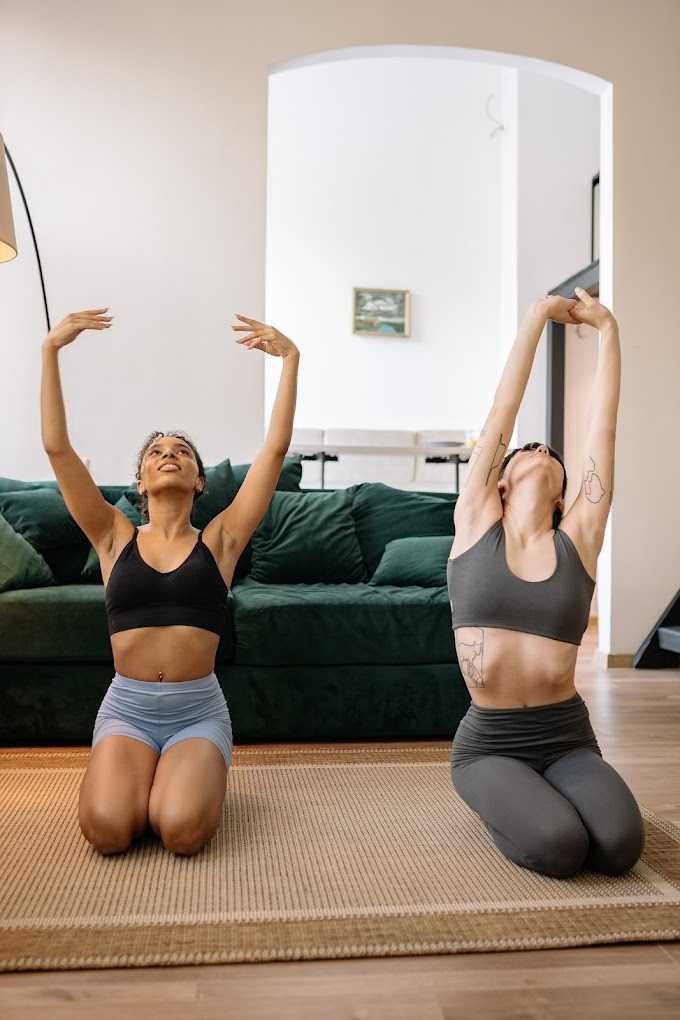Increase Your Flexibility With These 4 Yoga Poses
Adaptability is one of the critical components of good actual well-being. Over the long haul, however, your body might lose adaptability because of maturing, an inactive way of life, stress, or inappropriate stance and development propensities.
Assuming you're prepared to support your adaptability, consistently rehearsing yoga, regardless of whether at a class or at home, might be one of the most incredible ways for Trusted Source to expand versatility in your muscles and joints.
Alongside supporting your adaptability, rehearsing explicit yoga stances may likewise assist you with developing muscle fortitude and diminishing sensations of stress or uneasiness.
In this article, we'll investigate the advantages of expanding your adaptability and walk you through the best yoga models for further developing adaptability in your back, hips, center, neck, and shoulders.
For what reason is adaptability significant?
Expanding your adaptability is useful for you in numerous ways. Probably the main advantages include:
More noteworthy scope of movement. Expanded adaptability makes it more straightforward to move your joints a typical way with less exertion.
Less muscle pressure. Extending your muscles can assist with delivering pressure and snugness, making it more straightforward to move.
Better stance. Tight, tense muscles can prompt muscle strain and a helpless stance.
Less agony. At the point when your muscles aren't tense, there's normally less pressure and strain on specific pieces of your body and, thus, less torment in your back, neck, and shoulders.
Lower hazard of wounds. More noteworthy strength and adaptability in your muscles and joints might make you less inclined to wounds.
Less pressure. At the point when strain is delivered in your muscles, it might assist you with feeling more loose. Thus, that might bring down your feelings of anxiety.
Further developed course. A better blood stream might assist your muscles with recuperating an exercise and furthermore forestall firmness.
Best yoga models for further developed adaptability
In case you're keen on attempting a yoga class to expand your adaptability, Hatha, Vinyasa, or Yin styles are for the most part great choices.
If you're in a rush or would like to rehearse some yoga presents at home, the accompanying postures can be particularly useful for extending a large number of your significant muscles and supporting adaptability.
With each posture, go at your own speed. Zero in on how the posture feels rather than what it looks like. You can rehash each posture however many occasions as you like, as long as it doesn't feel excruciating or too hard to even think about doing accurately.
1. Serious side stretch (Parsvottanasana)
This forward twist extends your spine, hips, and legs. It likewise helps your stance, equilibrium, and processing.
To do this posture:
1. Remain with your left foot forward-looking and your right foot back, turning out your toes at a slight point.
2. Square both of your hips to look ahead.
3. Place your hands on your hips.
4. Twist at your hips to crease your middle forward, getting your jawline into your chest.
5. Drop your hands down to the floor, or spot them on a square.
6. Hold this posture for 30 seconds to 1 moment.
7. Switch the situation of your feet and do the opposite side.
2. Head to knee (Janu Sirsasana)
Reasonable for all levels, this posture further develops adaptability in your back, hips, and thighs. It likewise expands the bloodstream in the lower midsection and can be an incredible pressure reliever.
To do this posture:
1. Sit on the ground or on a yoga mat.
2. Broaden your right leg, and press your left foot into within your thigh.
3. Breathe in and raise your arms overhead.
4. Breathe out and twist your hips to crease forward toward your outstretched leg.
5. Place your hands on the floor, or clutch your outstretched leg or foot.
6. Hold for 1 to 2 minutes.
7. Switch legs and do the opposite side.
Models for Center Adaptability
3. Feline Cow (Bitilasana Marjaryasana)
The smoothness of this posture functions admirably for further developing versatility and adaptability in your center, neck, shoulders, and spine.
To do this posture:
1. Start this posture down on the ground, ensuring your wrists are underneath your shoulders and your knees are underneath your hips.
2. Keeping your weight adjusted equitably across your body, breathe in as you permit your midsection to fall toward the floor. Raise your chest and jawline as your paunch moves descending.
3. Breathe out as you press into your hands to gather your spine together toward the roof, getting your jawline into your chest as you do such.
4. Proceed with this development for 1 moment.
4. Bow Pose (Dhanurasana)
This halfway-level posture helps stretch a large number of the muscles that are utilized when sitting. It can assist with expanding adaptability in your center muscles just as the muscles in your back, chest, glutes, and legs.
Try not to do this posture in case you have agony or distress in your neck, bears, or back.
To do this posture:
1. Lie on your stomach with your arms close to your body.
2. Twist your knees and reach back with your hands to get a handle outwardly of your lower legs.
3. Attempt to take your shoulders and chest off the ground assuming that you can, however, don't push past what's agreeable.
5. Keep your head looking forward while taking long, full breaths.
6. Attempt to hold for as long as 30 seconds, then, at that point, discharge.
Rehash 1 to twice.














0 Comments
If you any doubts , please let me know